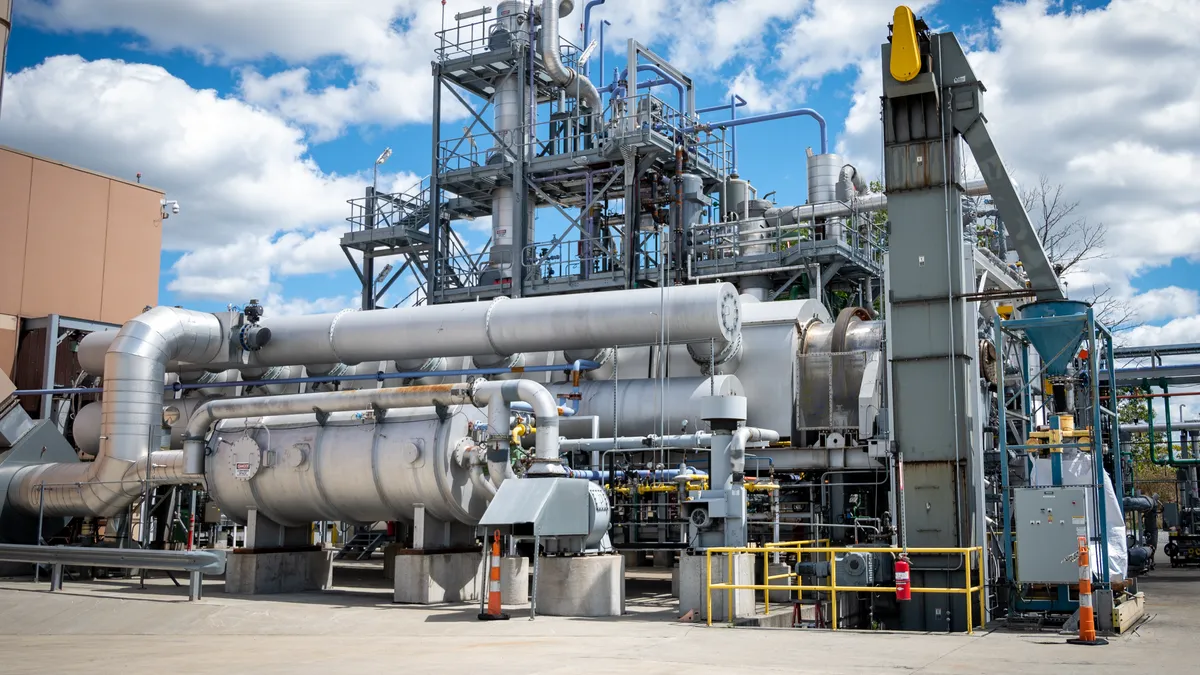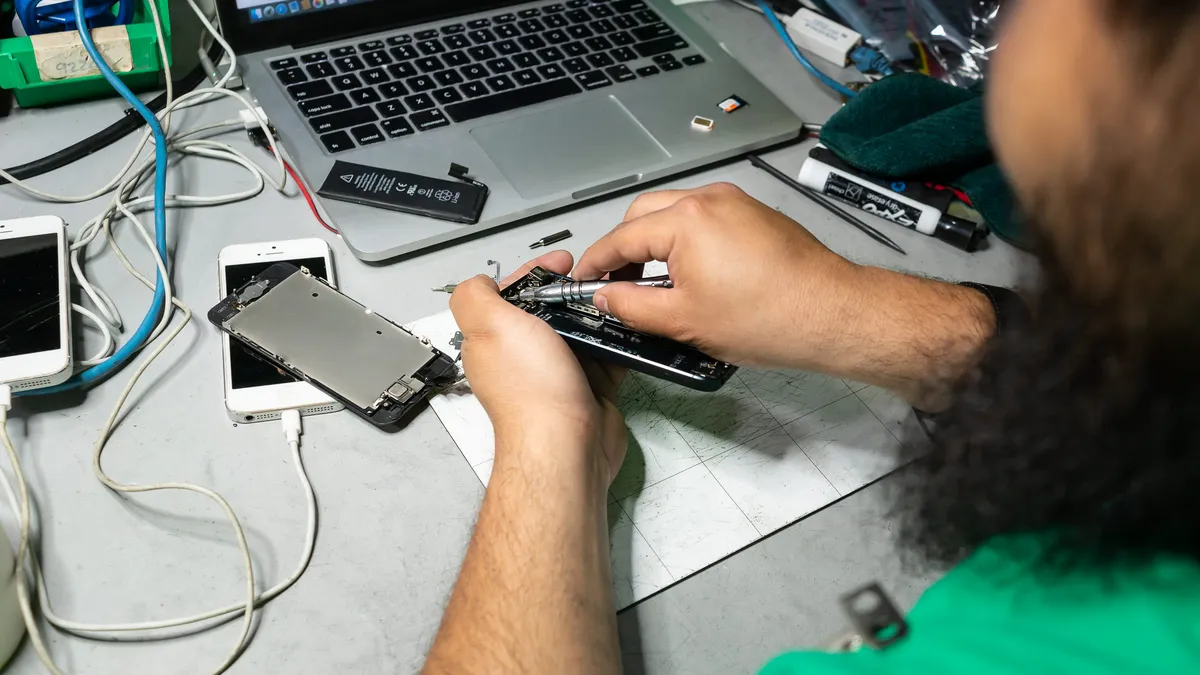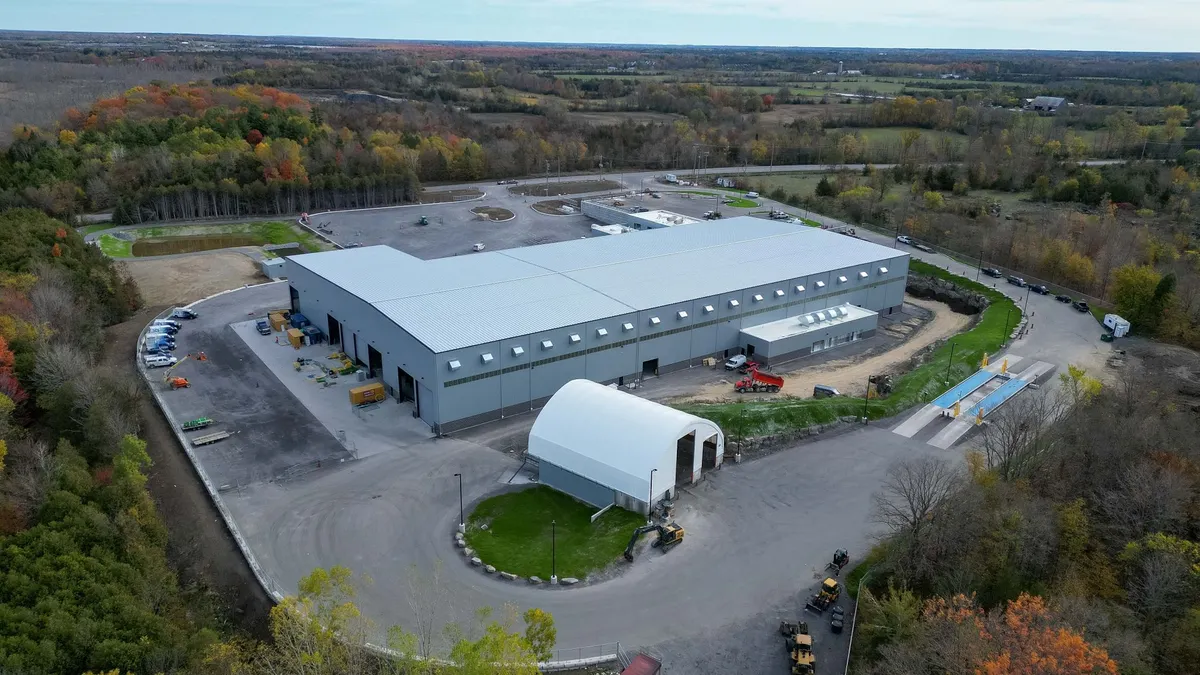At a time when MRFs are struggling to capture more value from incoming streams, the solution has often been to spend money on new equipment or reduce service options for customers. However, Titus MRF Services believes it has found another way.
The company has been working for seven years to prove out its "secondary MRF" prototype in Los Angeles, with the goal of building multiple facilities along the West Coast. Out of a primary feedstock of MRF residuals and mixed plastics — both considered essentially an expense for most operations these days — Titus estimates it can sort about half of that stream into valuable commodities. Given current market conditions plus rising expectations for plastic recycling, this concept has increasing financial appeal.
The Titus team is well-acquainted with these operational realities — its original and ongoing business offering is MRF equipment installation. President Mike Centers founded the company in 2001 — named after his family's Titus Welding Company — and has since worked on numerous well-known MRFs around the country.
"Now that there's no home, and that stream is increasing as a percentage of the blue bin, it's time to find ways to use that," said Centers. "The secondary MRF is that missing link that allows us to get the economics right."
Titus operates on a model that involves a "sorting fee" for MRFs, with up to 80% revenue share for any commodities recovered. While Titus declined to disclose its specific pricing, Centers said the net cost is cheaper than disposal tip fees. With the average local MRF generating around 10% in residuals, the math shifts in their favor.
Even with the current market situation — which Centers recognizes has caused some short-term challenges for Titus — the company is consistently finding value in much of the material that comes through its yard. Retrofitted from an old Waste Management facility, the operation cost an estimated $6 million and can handle up to 1,200 tons per month running one shift.
As currently configured, the system is capable of sorting up to six plastic resins on one pass, including polypropylene and notable amounts of PET and HDPE that escaped the original MRF. This configuration entails a variety of equipment — including optical sorting — along with manual labor. The system is also set up to capture aluminum and certain types of fiber, including cartons. Buyers for the PET are largely state-based, and Titus works with KW Plastics in Alabama for other resins. Containers covered by the California Redemption Value program also accumulate in truckload quantities on a near monthly basis.
It may seem surprising that such high volumes of valuable material are not getting captured at the primary MRF levels, but due to higher volumes and processing speeds, even the most well-situated facilities are expected to have yield loss. In fact, Titus actually prefers that MRFs let mixed plastics end up in the residual stream to avoid extra effort on their part, since that material is going to be sorted again anyway.
"We're the last stop before landfill," said Centers. "Our goal is to be a service to the MRFs."
By sourcing material from multiple MRFs in a regional footprint, Titus is able to accumulate truckload quantities of certain materials that otherwise might not be considered technically viable to recycle. For example, Titus is currently sorting out expanded polystyrene foam — anathema to many local recycling programs — and baling it with rigid polystyrene. Loads have been getting sold to PRI in Indiana and tested by Agilyx in Oregon.
In Centers' view, material bans aren't desirable from a market standpoint if secondary MRFs can help create more viable markets for the items in question. While many primary MRFs plan their capital improvements around multi-year contracts, facilities such as Titus can adapt more quickly to rapidly evolving product streams.
"It's a lot easier to make a few changes to, say, 13-15 secondary MRFs than to 700 MRFs," said Centers, noting that primary MRFs can always add capabilities for new streams as needed. This, he said, isn't seen as a threat to the Titus model because "there will be another product that's going to take its place that's going to be hard to recycle or low volume."
As for the material that Titus itself still can't find value in — a sizable set of piles that largely comprise fiber scraps, cups and various plastics — there could be more profit to extract in the future. Titus is currently exploring the potential of chemical recycling or similar technologies to capture value from streams such as black plastics, among other categories.
Now, after years of honing the prototype, Titus MRF Services just needs to find a way to scale up the concept. The company estimates a full-scale facility could be built for around $15 million and process more than 8,000 tons per month if running at least two shifts. The goal is to build three of them up the West Coast: the San Francisco Bay Area and Pacific Northwest are seen as ideal markets, though any market with high disposal costs and density is said to be a good fit.
Titus continues to pitch this vision far and wide, but to date isn't close enough to a deal to specify project timing or locations. The failure of QRS in Maryland has been cited as a cautionary tale by some, but Centers maintains his business model and sourcing strategy is different.
Heightened public awareness about ocean plastics, mounting pressure on MRFs as mixed plastics markets contract, and ever-more ambitious government recycling targets are all seen as potential trends in the company's favor. Titus itself was affected by China's import ban on mixed paper, but sees the recent pivot to domestic solutions as working in its favor. As residential programs in particular face more scrutiny, Centers sees increasing value in an option that offers "full blue bin accountability" and boosts actual recycling rates.
"It would close the loop on the success of recycling the blue bin," he said. "If it just goes to landfill, we lose control of it and we lose a lot of quality material that should be used for something much better."


















